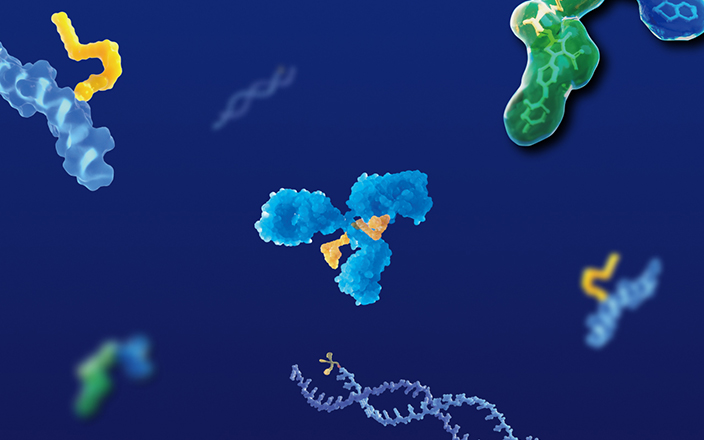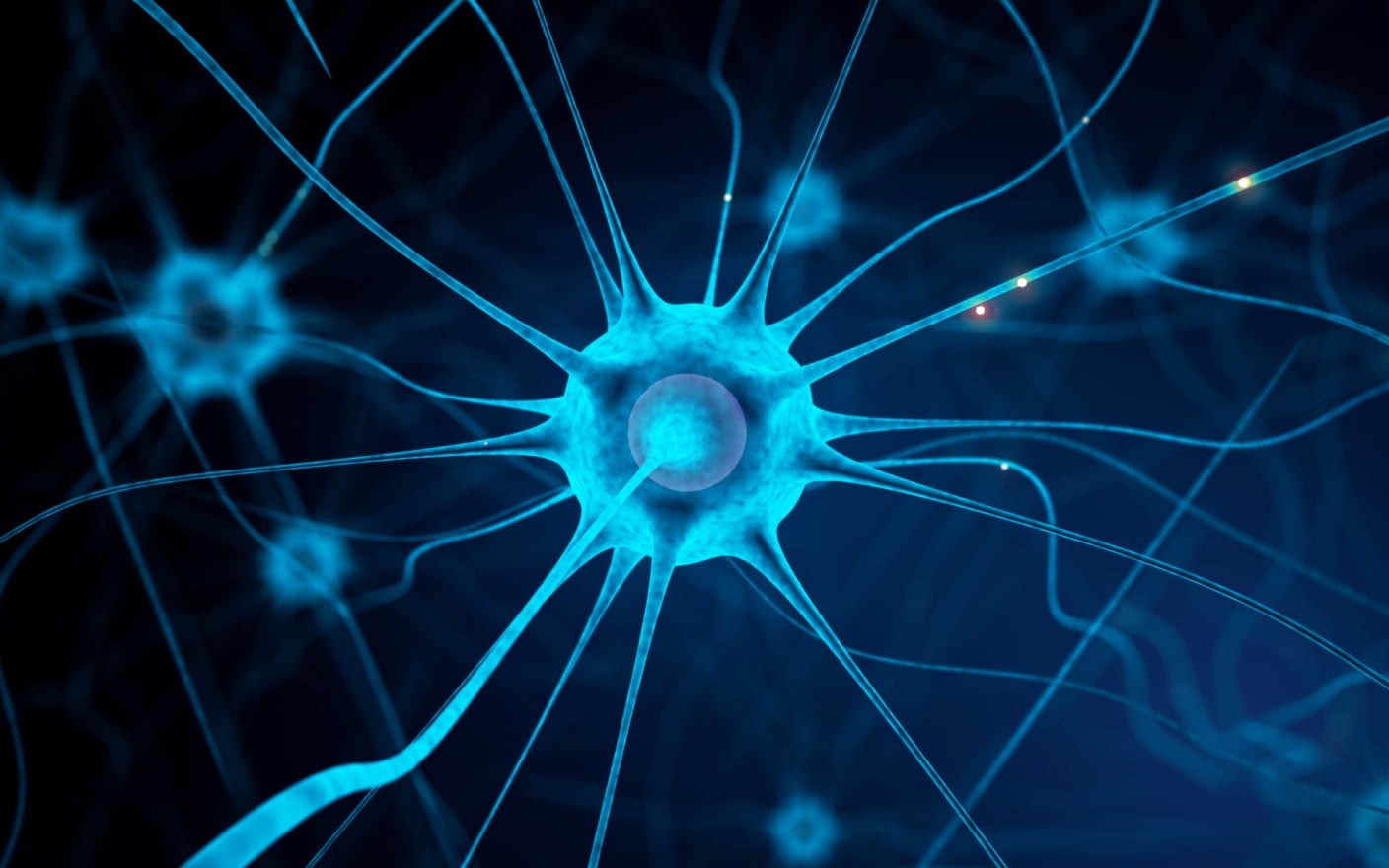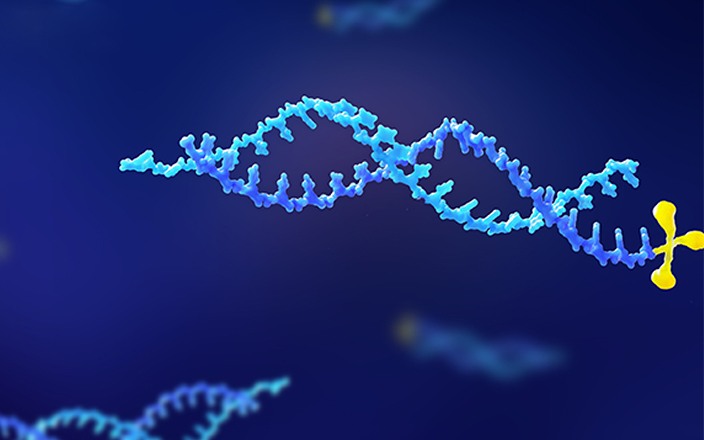Dr. Maotian Zhou, Principal Scientist - DMPK Services, WuXi AppTec · 10.03.22
Antibody-drug conjugates (ADCs) are an exciting therapeutic modality that can target and destroy cancer cells like few other therapies. They are highly potent, laser-focused drug tools capable of eradicating tumors where they exist. ADCs have been around since 2000 and the U.S. FDA has approved 14 of them designed to fight blood, breast, urethral and cervical cancers.1
Despite clear advantages, ADCs' structures—i.e., a monoclonal antibody, a cytotoxic payload and a chemical linker—make them difficult to investigate. To do so, it is essential to obtain each part's pharmacokinetic (PK) profiles to understand and address their inherent stability and toxicity challenges. From a bioanalytical perspective, drug metabolism and pharmacokinetic (DMPK) studies have different focuses depending on their developmental stage.
Regardless of discovery, development, preclinical or clinical phase, ADC PK studies generally include the quantitative analysis of total antibodies, conjugated antibody (ADC), free payload and possible metabolites. For discovery and development phase evaluations, experts recommend including and identifying the drug-antibody ratio (DAR) and biotransformation in vitro; preclinical and clinical phase evaluations need to include immunogenicity evaluation as well. Bioanalysis is indispensable in helping scientists understand ADCs’ properties at different stages of development.
Regardless of category or phase, investigating and developing ADCs requires a combination of small- and large-molecule approaches to monitor the drug's PK and biotransformation. This article will detail bioanalytical approaches to investigating ADCs and provide recommendations for drug sponsors currently developing them.
An introduction to ADC investigations
The primary goal of ADC bioanalysis is understanding the drug's structure—this will form the basis of the study strategy. ADCs contain either cleavable or non-cleavable linkers. When cleavable linkers encounter lysosomal enzymes or acidic conditions, they release their payloads. The cancerous cells are then killed, breaking and re-releasing the payload (bystander effect). Non-cleavable linkers, on the other hand, release their payloads by degrading antibodies. These released payloads bind to partial peptide chains or amino acids.
Scientists must understand not only the antibody part of the ADC (biological mechanisms of ligand, FC receptor mechanisms) but also understand the payload's release process and payload-related components for cleavable and non-cleavable linkers. Payload release in target organs determines an ADC's efficacy, while payload release in non-target tissues determines its toxicity.
Establishing the DAR is another critical step when beginning ADC investigations. DAR represents the number of payloads conjugated to each antibody. This parameter describes ADCs' physiochemical properties, including their safety and effectiveness. For FDA-approved ADC drugs, the DAR range is typically 3-4, meaning three or four payloads conjugated to a single antibody. An overly high DAR will increase drug clearance, decrease half-life, and lead to drug aggregation and increased toxicity.2 That said, a high DAR does not mean it is a poor ADC (DS8021 is a good example). The proper selection of payload and linker design take advantage of a high DAR, resulting in good efficacy against tumors.
Combining small- and large-molecule strategies is necessary to complete ADC investigations; each takes time and provides unique insights. For example, metabolite identification studies can help identify the drug's active components and whether the ADC releases the payload itself or other payload-related metabolites. The interpretation of metabolites identification data (small-molecule strategies) must combine with DAR evaluation and ADC stability (large-molecule strategies) for researchers to understand the efficacy and safety of the ADC. This in turn bridges the gap between the pharmacodynamics and toxicity research of the drug.
Instances in which tumor-expressed antigens show up in normal tissue (i.e., not in tumor cells) can result in dangerous "on-target, off-tumor" toxicity. To avoid this, some scientists use a prodrug approach that allows the drug to remain inactive in the circulatory system until it reaches the tumor microenvironment.
Despite clear advantages, the prodrug approach comes with distinct bioanalytical challenges. The prodrug design complicates the ADC's structure, increasing the molecular species of the ADC in vivo. Monitoring both activated (cleaved) and deactivated forms of prodrug ADC is required to understand whether the drug design meets expectations.
Considering the complicated nature of ADC molecular species, monitoring the active and deactivated drugs at the same time poses an even greater challenge to bioanalysis. In this case, some special analytical tools may be more effective. For example, the hybrid LBA and LC/MS-based surrogate peptide approach may be considered. Using this approach, the prodrug ADC is enriched then “digested" into smaller peptides; the quantification of "signature" peptides from different regions of the ADC helps scientists understand the integrity of the ADC in vivo. Selecting appropriate peptides is critical to ensuring the assay's sensitivity, specificity and robustness.
Common platforms for ADC bioanalysis
The most common bioanalysis platforms used to investigate ADCs will be the same across laboratories. Ligand-binding assays (LBA), hybrid LBA-LC/MS, triple quadrupole based traditional LC/MS and LC/HRMS assays are used to examine exposure-response relationships in drug development. ADCs will always require some combination of these platforms to be used. Each method listed here enjoys distinct advantages and disadvantages in ADC bioanalysis:
Ligand-binding assays (LBAs)
The LBA method is the most commonly used strategy to measure the antibody part of the ADC, with total antibodies and conjugated antibodies measured. This method offers adequate sensitivity to analyze large molecules. It also promises high throughput and robustness at a relatively low cost of implementation and instrumentation.
The LBA platform has several challenges specific to ADC bioanalysis. The conjugated antibody quantification generally cannot provide the DAR information, and it is not sensitive to the biotransformation of ADC. The specificity and sensitivity of LBA are highly dependent on the selection of critical reagents. The development of critical reagents for LBA can be costly and time-consuming, especially for anti-payload antibodies. Perhaps the most significant disadvantage in using LBAs for ADC bioanalysis is their complete inability to capture information about the ADC's structure or possible biotransformation.
Hybrid LBA & LC/MS
LBA-LC/MS represents the simultaneous use of two techniques considered the gold standard for large and small molecules—LBA and LC/MS. This method can immunocapture or enrich the target analyte (ADC) using LBA, separate the complex mixtures via liquid chromatography (LC) and identify and quantify different species using mass spectrometry (MS).
The platform can handle sensitive, quantitative analyses, including DAR evaluations. For ADCs, LBA-LC/MS can provide analyte structure information and assess drug biotransformation, but it struggles with sensitivity compared with LBA platform along.
Despite clear benefits and comprehensive usability, LBA-LC/MS methodologies are often more expensive and require highly complex equipment, thus requiring extensive collaboration among highly trained staff. The varied data processing methods (especially the data deconvolution algorithms) can also affect the results for intact analytes. Finally, there is very little regulatory guidance around method qualification and validation.
Triple quadrupole based traditional LC/MS
A powerful approach used for qualitative and quantitative analysis, triple quadrupole LC/MS has revolutionized small molecular drug development over the past two decades. Large molecules present challenges for LC/MS platforms due to higher molecular weight, larger sizes, structural complexity, and heterogeneity. The methodologies of triple quadrupole LC/MS are very robust, achieving the gold standard for small molecule and peptide bioanalysis and also lauded for its multiplexing abilities. For ADCs, the triple quadrupole LC/MS method effectively quantifies free payload and its related species in vivo and in vitro.
Liquid chromatography/high-resolution mass spectrometry (LC/HRMS)
With help from advanced detectors—orbitrap and TOF (time-of-flight), specifically—the LC/HRMS platform generally yields higher resolution, making it very effective at identifying compounds, their structures and sequence, including the breakdown of antibodies, peptides, small molecular, etc. The LC/HRMS method also enjoys high selectivity due to its ability to measure a compound's mass accurately. The platform is used frequently in identify specific metabolites when small molecule biotransformation is in question.
Knowing when to use which platform depends heavily on the study's bioanalytical goals. For example, LBA is often the first choice in antibody analysis. But if knowing the DAR or understanding the antibody's biotransformation—e.g., whether the payload has been cleaved at the linker or the payload site—is the goal, LC/HRMS or hybrid LBA-LC/MS is the better tool.
Here is a better way to illustrate the combined approach. Say we use LBA to immunocapture an antibody. This reduces the background noise and increases sensitivity. Then, we use LC/HRMS to conduct high-resolution intact protein bioanalysis. We measure the differences in molecular weight pre- and post-payload release, which allows us to predict the ADC's structure. This also helps us better understand the ADC's biotransformation and DAR distribution.
Conducting these analyses in-house is certainly doable, but capabilities depend on the platforms and instrumentation available. LC/HRMS instruments require a significant investment to purchase and maintain. Likewise, given ADCs' incredible complexity, properly investigating them requires individuals with varied scientific backgrounds, each with a penchant for data interpretation—especially when using the LBA-LC/MS approach.
Recommendations for ADC bioanalysis
Establishing priorities during ADC investigations is crucial to ensuring your program stays on track. During the early discovery phase, drug efficacy is the chief concern, thus, DMPK analyses take priority. These analyses evaluate a drug candidate's biotransformation process—i.e., how payload will be cleared from the antibody and kill the cancer cell without reaching dangerous exposure levels. DMPK studies shed light on the connection between efficacy and potential toxicity of the ADC, which helps researchers make important decisions on the design of linkage, payload and antibody part.
A drug candidate's absorption, distribution, metabolism, and excretion (ADME) properties, combined with PK data, will reveal whether the drug will be an effective therapeutic. In vitro ADME studies are crucial for ADC investigations because they help determine a drug's stability, efficacy and ultimate safety.
Using hybrid LBA & LC/HRMS to monitor intact ADCs is the most effective way to understand a drug's stability. Generating a complete picture of the ADC—including DAR and biotransformation data—will require significant time and resources, but it will also provide the most informative and valuable data. Knowing that the ADC is stable in plasma in vitro should give investigators confidence that it will be equally stable in the circulatory system. This information could also provide critical support during safety evaluations (i.e., toxicology studies) and help move the ADC toward clinical trials.
These studies significantly impact whether an ADC moves forward (or is scrapped) and should happen during early discovery. Pushing a drug toward an IND submission without fully understanding its stability will waste critical time and resources.
From a regulatory perspective, ADCs are an exciting but still emerging field for bioanalysis and, as such, the pathway is still undefined. Intact protein bioanalysis is a unique assay that is becoming very popular in the field, but there is little regulatory guidance around methodology or validation. For example, intact protein bioanalysis uses several highly complex algorithms, each with its own specific setting, to analyze the data. Using a mismatched algorithm and setting can adversely affect the data output.
At present, regulators do not require this data. As ADCs evolve as a therapeutic solution and more use cases emerge, that may change. Regulators today only ask for total antibody/conjugated antibody/free payload PK data for IND pharmacokinetics submissions. The additional data LC/HRMS can provide will help drug developers and sponsors identify and proceed with the most promising drug candidates.
A final word
Drug developers and sponsors are justifiably excited about ADCs' potential as highly effective cancer-killing therapies. Given their complex structures, ADCs require a combination of small- and large-molecule studies to gather the right data and ensure their stability, efficacy and safety. But more than instrumentation, ADC bioanalysis requires an integrated strategy to be truly effective. Specific questions can help customize the ADC bioanalytical strategy. For example:
Is the ADC is cysteine-conjugated or lysine-conjugated?
Is the payload conjugated to a specific site or not?
Is the payload cleavable or non-cleavable?
Are anti-payload antibodies present or not present?
Is the payload toxin new, or has it been studied at length?
The answers to these questions will help determine the proper pathway for bioanalytical analysis. The ability to accelerate research and develop safe, effective ADCs relies less upon the assays or platforms used and more on the investigator's skills, knowledge, and expertise. Drug developers and sponsors that do not have the time, capacity, or expertise to conduct these investigations in-house should consider working with a testing partner.
Click here to learn more about the strategies for ADC , or talk to a WuXi AppTec expert today to get the support you need to achieve your drug development goals.
Committed to accelerating drug discovery and development, we offer a full range of discovery screening, preclinical development, clinical drug metabolism, and pharmacokinetic (DMPK) platforms and services. With research facilities in the United States (New Jersey) and China (Shanghai, Suzhou, Nanjing, and Nantong), 1,000+ scientists, and over fifteen years of experience in Investigational New Drug (IND) application, our DMPK team at WuXi AppTec are serving 1,500+ global clients, and have successfully supported 1,200+ IND applications.
Reference
[1]Zhang, X., Huang, A.C., Chen, F., Chen, H., Li, L., Kong, N., Luo, W. and Fang, J., 2022. Novel development strategies and challenges for anti-Her2 antibody-drug conjugates. Antibody Therapeutics, 5(1), pp.18-29.
[2]Vollmar, B.S., Frantz, C., Schutten, M.M., Zhong, F., Del Rosario, G., Go, M.A.T., Yu, S.F., Leipold, D.D., Kamath, A.V., Ng, C. and Xu, K., 2021. Calicheamicin Antibody–Drug Conjugates with Improved PropertiesA Novel Calicheamicin ADC with Improved Properties. Molecular Cancer Therapeutics, 20(6), pp.1112-1120.
Related Services and Platforms




-

 DMPK BioanalysisLearn More
DMPK BioanalysisLearn More -

 Novel Drug Modalities DMPK Enabling PlatformsLearn More
Novel Drug Modalities DMPK Enabling PlatformsLearn More -

 Novel Drug Modalities BioanalysisLearn More
Novel Drug Modalities BioanalysisLearn More -

 Small Molecules BioanalysisLearn More
Small Molecules BioanalysisLearn More -

 Bioanalytical Instrument PlatformLearn More
Bioanalytical Instrument PlatformLearn More -

 PROTAC DMPK ServicesLearn More
PROTAC DMPK ServicesLearn More -

 ADC DMPK ServicesLearn More
ADC DMPK ServicesLearn More -

 Oligo DMPK ServicesLearn More
Oligo DMPK ServicesLearn More -

 PDC DMPK ServicesLearn More
PDC DMPK ServicesLearn More -

 Peptide DMPK ServicesLearn More
Peptide DMPK ServicesLearn More -

 mRNA DMPK ServicesLearn More
mRNA DMPK ServicesLearn More -

 Covalent Drugs DMPK ServicesLearn More
Covalent Drugs DMPK ServicesLearn More
Stay Connected
Keep up with the latest news and insights.
















